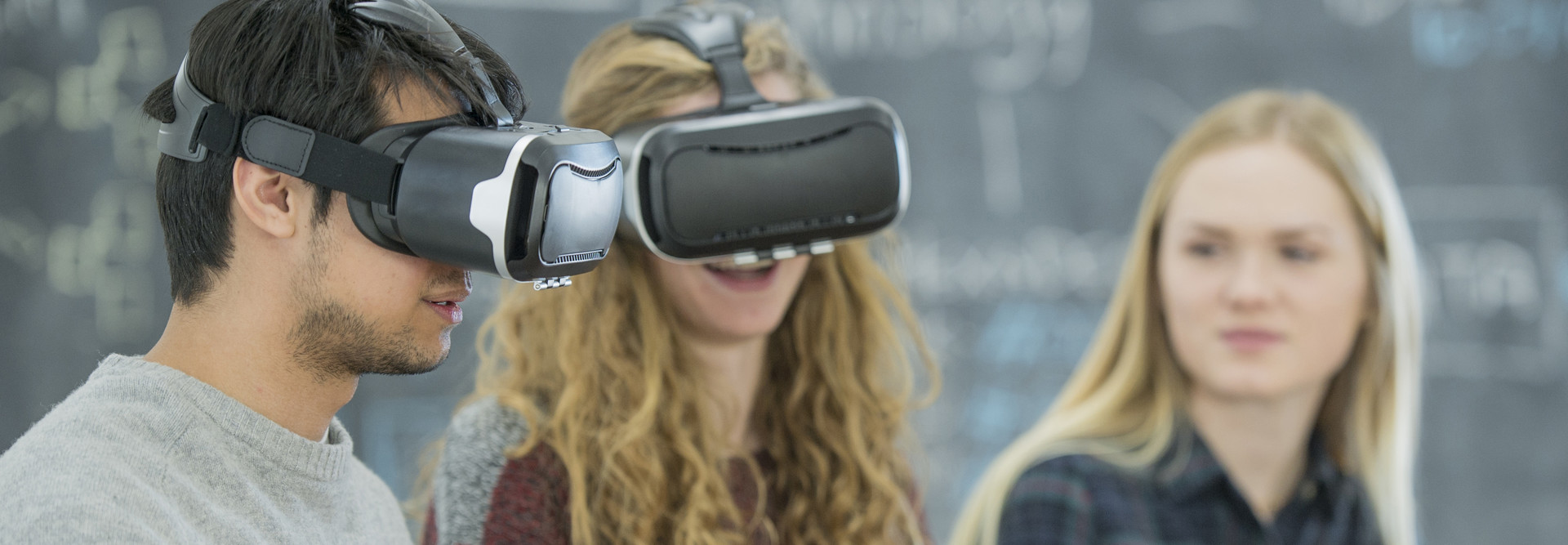How We Can Prevent a Digital Divide 2.0 as Virtual Reality Expands
In the early days of the digital revolution, the digital divide was a major concern. Many institutions, including my own, developed programs to ensure all students would have access to technology. Now we are entering a new era, in which virtual and augmented reality offer an exciting opportunity to reinvent our learning environments. On the horizon are virtual field trips and labs, simulations, world-building experiences and interactive storytelling. Yet, as we explore the promise of VR and AR for education, we must ensure we don’t create new barriers to access.
SIGN UP: Get more news from the EdTech newsletter in your inbox every two weeks!
Numerous VR Options in Higher Ed
You can readily see the potential for a new digital divide in existing high-end VR headsets, which can cost several hundred dollars and require computers capable of supporting the applications. One solution is mobile headsets paired with smartphones, such as Google’s Daydream View and the popular Samsung Gear VR. These devices have hand controllers and offer a basic VR experience. But challenges remain: Not all smartphones run the same experiences, and Google’s and Samsung’s headsets work only with Android devices.
The least expensive solution is Google Cardboard, which is quick, easy and affordable. However, the visual quality is less sophisticated, and the lack of a hand controller limits interactivity. You’re not doing VR so much as watching 360-degree videos. Even so, it’s been an easy way for faculty to introduce immersive experiences. The new stand-alone VR headsets, which work without smartphones or external computers, may offer a solution. The Lenovo Mirage debuted at the 2018 Consumer Electronics Show, and Facebook plans to release two stand-alone devices this year.
One way to broaden access is to offer VR experiences through dedicated spaces or events that are open to everyone in the campus community. At many universities, libraries are becoming hubs of technology-enhanced collaboration and makerspace-like creativity. This makes them a natural home for VR content. An institution could make a modest investment in VR equipment and make it accessible to students, much like media labs do with video cameras. In the near future, we may see VR headset carts, checkout stations and even lease/purchase initiatives in some academic programs. Institutions can also, on their own or in partnership with companies that rent VR headsets, host events that give students and faculty a chance to experiment.
When it came to smartphones and the digital divide, we generally let students shoulder the cost. That made sense, given that students saw a major need for the devices in their personal lives. VR and AR are different, but if the public widely adopts these devices, we can expect students to bring them to campus. In a rapidly changing technology environment, we need to be observant and resourceful in addressing potential equity issues.

Help Students Learn How to Use VR
Will VR headsets become as ubiquitous as smartphones, so popular that we will expect students to purchase their own? Truthfully, we don’t know. But it will be easier to develop immersive learning spaces and provide access when devices don’t require additional computers.
Most important, let’s recall that the original digital divide was not only a question of access, but also of support and understanding how to use technology. As students embrace this next phase of the digital revolution, it will be up to us to foster a new form of digital literacy: a visual and experiential literacy to help them navigate a new world of learning experiences.
We live in a fascinating time as a new wave of technology surges toward us. Don’t discount the possibility of a Digital Divide 2.0 — but don’t expect it to follow the same patterns we saw in the past. Much will depend on the choices we make in integrating immersive technology into our learning environments. We’re on the cusp of an incredible opportunity to transform the learning experience. It would be a tragedy if we let barriers to access stand in the way.









